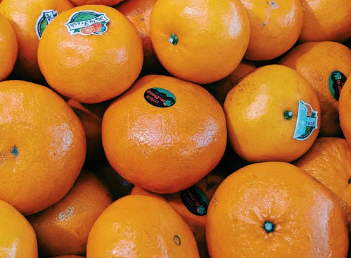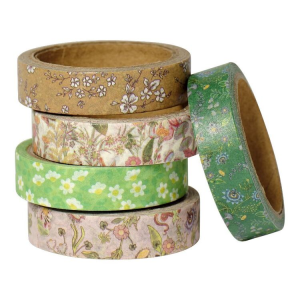We’re tossing billions of these tiny plastics each year—so why are they still stuck to our fruit?
By
Maan
- Replies 19
They’re tiny, easy to overlook, and often end up in places they shouldn’t—but they’re causing big headaches behind the scenes.
A recent decision out of South Australia has sparked debate about an everyday item many of us peel off without a second thought.
Here’s why some want them gone for good, and why getting rid of them isn’t as simple as it sounds.
They might seem harmless—just a little sticker on your apple or banana—but they’ve been quietly building up into a much bigger environmental headache.
Plastic fruit labels have long irritated Australian consumers, but behind the scenes, they’ve also been creating challenges for composters, waste facilities and the environment.
In fact, the problem was considered serious enough for South Australia to become the first state to schedule a ban on them—until plans were suddenly delayed.
The state’s move had been set to take effect in September, alongside restrictions on other single-use plastics like mini soy sauce fish containers.
But growers and industry groups called for more time, and South Australia agreed to put the brakes on.
It wasn’t just a regulatory decision—South Australians had spoken up, too. In public submissions, residents didn’t mince words.
‘These are so f****** annoying and unnecessary,’ one wrote.
Another said: ‘I hate these stickers and consider them totally unnecessary on my fruit products.’
The proposed ban was part of a broader push to reduce problematic plastics, and stickers were high on the hit list. Though they may be small, the numbers told a different story: Australians peeled off an estimated 5.62 billion of them each year.
Those that weren’t eaten accidentally, washed down drains or tossed in compost ended up in landfill—adding around 110 tonnes of plastic annually.
It wasn’t just South Australia taking notice. Across the Tasman, New Zealand had already instituted a ban in 2023—only to later hit pause and push enforcement out to 2028.
Their environment minister, Penny Simmonds, said the country wasn’t backing away from its commitment to reducing plastic waste, but instead was ‘taking a more measured approach’ to give industries time to adapt and manage costs.
So why are these labels on fruit in the first place?
There’s no rule in Australia’s Food Standards Code that requires them. But the stickers, often carrying a PLU (price look-up code), helped retailers identify the fruit’s type and origin.
The Australian Fresh Produce Alliance defended them as the most efficient way to pass along information while minimising packaging.
In a previous submission, the alliance said: ‘Additionally, they play a vital role in inventory management, traceability, reducing food waste and quality control for both producers and retailers.’
Alternative options had been floated. Compostable stickers existed, the industry said, but weren’t yet scalable. There were even trials overseas of ‘fruit tattoos’—laser-etched labels on the skin or peel of fruit, already tested in Europe and the UK.
But even as solutions emerged, the environmental cost of existing labels remained an issue.
Ryan Collins, head of research at Planet Ark, explained the dilemma: if the stickers ended up in green bins or compost, they contaminated the final product. ‘If they’re left on those scraps, on the skin, and they go into curbside collection, then it ends up being a contaminant for the organics processor or composter,’ he said. That contamination impacted the quality of soil products used in agriculture and landscaping.
It didn’t stop there. The stickers could also become litter, said Cip Hamilton of the Australian Marine Conservation Society. ‘Once in the environment, plastics are almost impossible to recover. Plastic fragments can cause devastating impacts to our wildlife and ecosystems.’
Despite South Australia’s delay, the broader goal hadn’t been abandoned. Environment minister Dr Susan Close reaffirmed the state’s commitment to banning fruit stickers and said the coming year would involve working with growers, industry and other governments.
‘Many South Australians told us through previous surveys and consultations that they “loathed” fruit stickers as an inconvenience to remove before they recycle their food scraps,’ she said.
Elsewhere, New South Wales proposed compostable labels by 2030, while Tasmania slated them for phase-out during its second stage of plastic bans.
So while the timeline shifted, the push to peel back on stickers remained active. Whether the industry can stick to new standards—and how quickly—was still a work in progress.

Many seniors grew up in a time when groceries didn’t come with stickers on every apple—so do you think we really need them now? Let us know your thoughts in the comments.
A recent decision out of South Australia has sparked debate about an everyday item many of us peel off without a second thought.
Here’s why some want them gone for good, and why getting rid of them isn’t as simple as it sounds.
They might seem harmless—just a little sticker on your apple or banana—but they’ve been quietly building up into a much bigger environmental headache.
Plastic fruit labels have long irritated Australian consumers, but behind the scenes, they’ve also been creating challenges for composters, waste facilities and the environment.
In fact, the problem was considered serious enough for South Australia to become the first state to schedule a ban on them—until plans were suddenly delayed.
The state’s move had been set to take effect in September, alongside restrictions on other single-use plastics like mini soy sauce fish containers.
But growers and industry groups called for more time, and South Australia agreed to put the brakes on.
It wasn’t just a regulatory decision—South Australians had spoken up, too. In public submissions, residents didn’t mince words.
‘These are so f****** annoying and unnecessary,’ one wrote.
Another said: ‘I hate these stickers and consider them totally unnecessary on my fruit products.’
The proposed ban was part of a broader push to reduce problematic plastics, and stickers were high on the hit list. Though they may be small, the numbers told a different story: Australians peeled off an estimated 5.62 billion of them each year.
Those that weren’t eaten accidentally, washed down drains or tossed in compost ended up in landfill—adding around 110 tonnes of plastic annually.
It wasn’t just South Australia taking notice. Across the Tasman, New Zealand had already instituted a ban in 2023—only to later hit pause and push enforcement out to 2028.
Their environment minister, Penny Simmonds, said the country wasn’t backing away from its commitment to reducing plastic waste, but instead was ‘taking a more measured approach’ to give industries time to adapt and manage costs.
So why are these labels on fruit in the first place?
There’s no rule in Australia’s Food Standards Code that requires them. But the stickers, often carrying a PLU (price look-up code), helped retailers identify the fruit’s type and origin.
The Australian Fresh Produce Alliance defended them as the most efficient way to pass along information while minimising packaging.
In a previous submission, the alliance said: ‘Additionally, they play a vital role in inventory management, traceability, reducing food waste and quality control for both producers and retailers.’
Alternative options had been floated. Compostable stickers existed, the industry said, but weren’t yet scalable. There were even trials overseas of ‘fruit tattoos’—laser-etched labels on the skin or peel of fruit, already tested in Europe and the UK.
But even as solutions emerged, the environmental cost of existing labels remained an issue.
Ryan Collins, head of research at Planet Ark, explained the dilemma: if the stickers ended up in green bins or compost, they contaminated the final product. ‘If they’re left on those scraps, on the skin, and they go into curbside collection, then it ends up being a contaminant for the organics processor or composter,’ he said. That contamination impacted the quality of soil products used in agriculture and landscaping.
It didn’t stop there. The stickers could also become litter, said Cip Hamilton of the Australian Marine Conservation Society. ‘Once in the environment, plastics are almost impossible to recover. Plastic fragments can cause devastating impacts to our wildlife and ecosystems.’
Despite South Australia’s delay, the broader goal hadn’t been abandoned. Environment minister Dr Susan Close reaffirmed the state’s commitment to banning fruit stickers and said the coming year would involve working with growers, industry and other governments.
‘Many South Australians told us through previous surveys and consultations that they “loathed” fruit stickers as an inconvenience to remove before they recycle their food scraps,’ she said.
Elsewhere, New South Wales proposed compostable labels by 2030, while Tasmania slated them for phase-out during its second stage of plastic bans.
So while the timeline shifted, the push to peel back on stickers remained active. Whether the industry can stick to new standards—and how quickly—was still a work in progress.
Key Takeaways
- South Australia delayed its planned ban on plastic fruit stickers after pushback from growers and industry.
- Australians remove over 5.6 billion of these labels annually, with many ending up as landfill or compost contaminants.
- The stickers are not legally required but are used for inventory, pricing and traceability purposes.
- States like NSW and Tasmania are still planning phase-outs, while alternatives like compostable labels and fruit tattoos are being explored.
Many seniors grew up in a time when groceries didn’t come with stickers on every apple—so do you think we really need them now? Let us know your thoughts in the comments.









